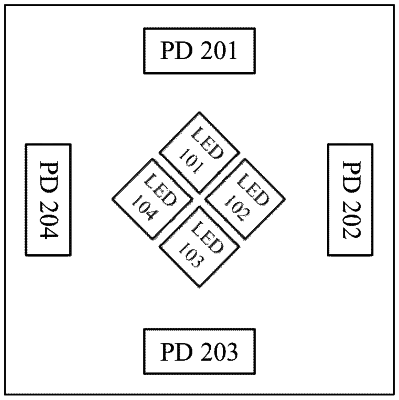| CPC G06F 1/3231 (2013.01) [G06F 1/163 (2013.01); G06F 3/011 (2013.01); G06F 3/0304 (2013.01)] | 17 Claims |

|
1. A wearing state detection method for detecting a wearing state of a wearable device, wherein the wearable device comprises a light emitting unit and a light receiving unit, and the wearing state detection method comprises:
emitting, by the light emitting unit, light of at least two different wavelengths to a subject in a time division manner;
receiving, by the light receiving unit, reflected light corresponding to light of each of the at least two different wavelengths after being reflected by the subject;
obtaining intensity of reflected light corresponding to the light of each of the at least two different wavelengths, respectively;
calculating a fluctuation range of a light intensity ratio, the light intensity ratio being a ratio between intensity of the reflected light corresponding to the light of the at least two different wavelengths received by a same light receiving unit; and
determining that the wearable device is in a wearing state when the fluctuation range of the light intensity ratio is greater than or equal to a first threshold,
wherein absorption and reflectivity of the light of the at least two different wavelengths by a human body are different,
wherein said obtaining the intensity of the reflected light corresponding to the light of the at least two different wavelengths further comprises:
acquiring an electrical signal output by the light receiving unit after receiving the reflected light corresponding to the light of each of the at least two different wavelengths, respectively, to obtain raw data of intensity of the reflected light;
acquiring an electrical signal output by the light receiving unit after receiving ambient light to obtain raw data of intensity of the ambient light before and/or after the light emitting unit emits the light of the at least two different wavelengths to the subject in a time division manner:
eliminating ambient light component contained in the raw data of intensity of the reflected light by using the raw data of intensity of the ambient light; and
calculating the intensity of the reflected light corresponding to the light of each of the at least two different wavelengths respectively based on the raw data of intensity of the reflected light with the ambient light component being eliminated.
|